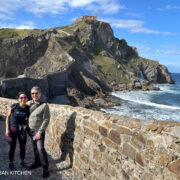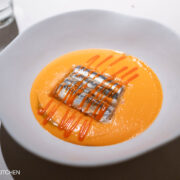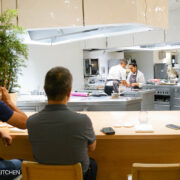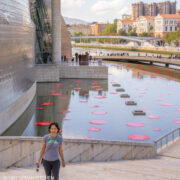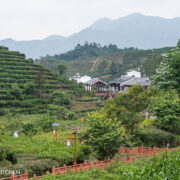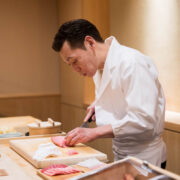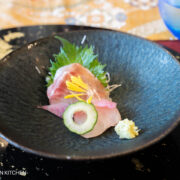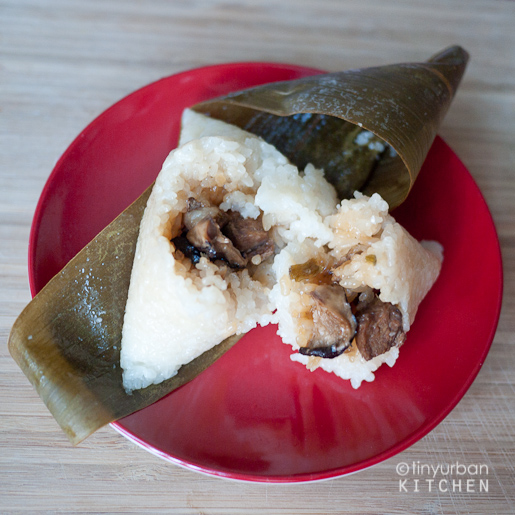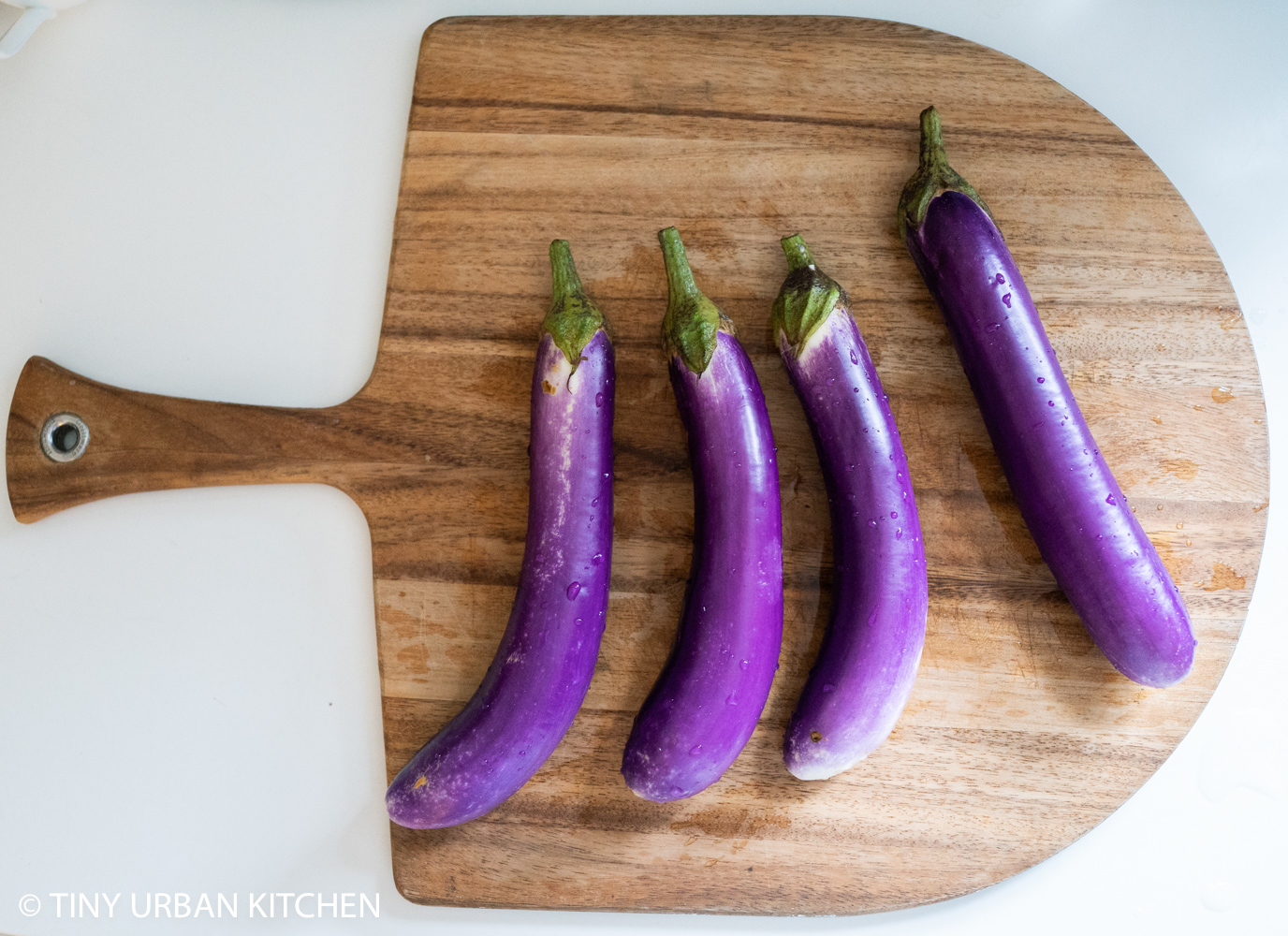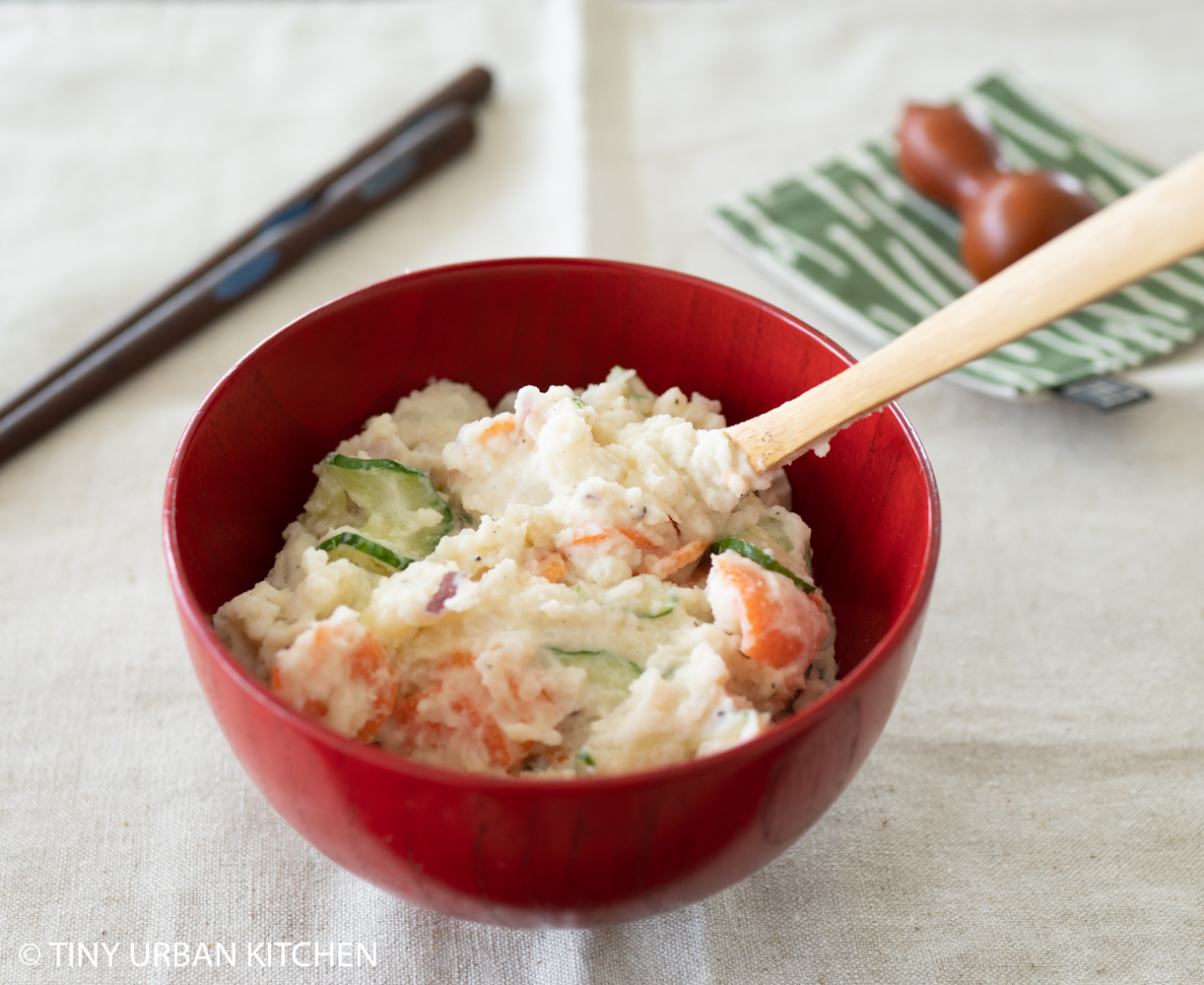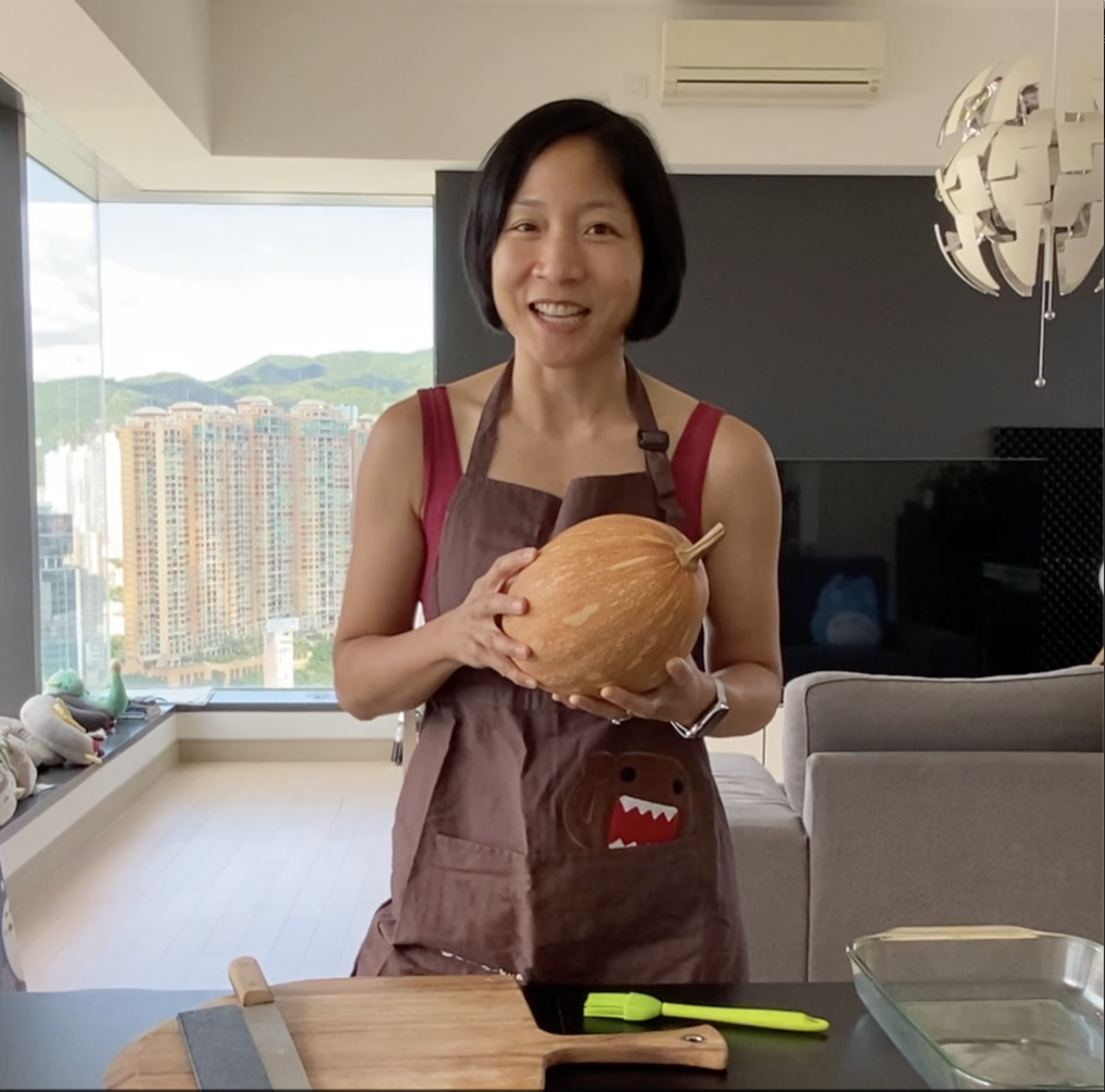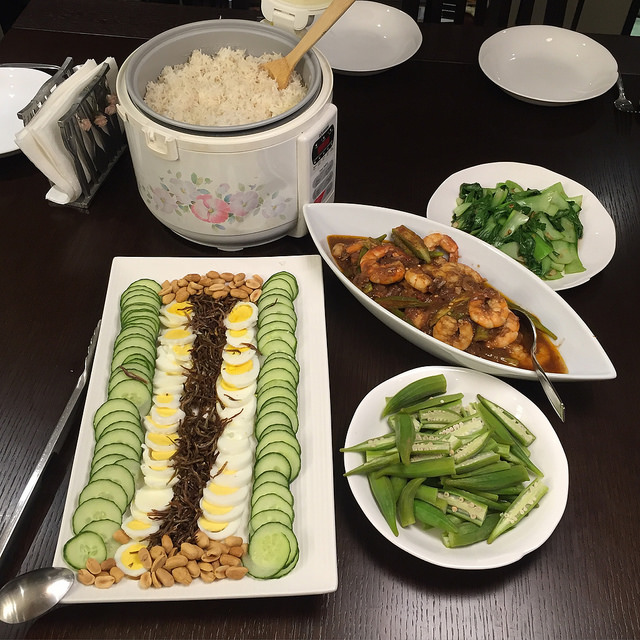There's a dish that I've wanted to blog about for a long time.
And yet, for some reason, I was afraid to try it. It's one of the most complicated recipes I know. At the same time it's such an integral part of my family's heritage, I knew some day I had to muster up the courage to make it.
Why? This is the one and only recipe passed down from my maternal grandmother.
My maternal grandmother, who we affectionately called “Gramma,” was the oldest of 13 kids (10 of whom lived to adulthood). Because her own mother was disabled early on in life, Gramma started cooking for the entire family at the age of nine! As a result, she was an amazing cook and made all sorts of traditional Taiwanese dishes.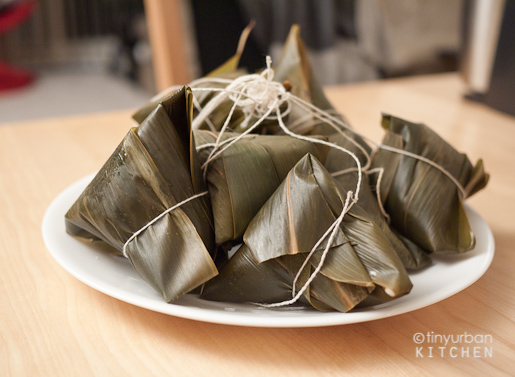
One of our favorites was “bah-tzang,” a Taiwanese bamboo-wrapped sticky-rice dumpling that is a delight to eat. Bah-tzangs have sticky rice on the outside and are filled with a fragrant mixture of pork, mushrooms, shrimp, and other ingredients. The best part? The entire dumpling is infused with the sweet essence of bamboo leaves, which I love.
I ate these growing up, and often helped my mom make them when I was a kid. Despite all that, I still have never attempted to make the entire thing from scratch on my own. So finally, what better opportunity to challenge myself than for Round 4 of Project Food Blog?
Before we get to the recipe, though, let me give you just a brief history about “bah-tzang” (or “zhongzi” in Mandarin).
Brief Historical Context
It’s unclear exactly what the origins of bah-tzangs are, but legend has it that they came about in honor of a famous Chinese scholar, Qu Yuan, who was a poet and minister serving the King of Chu during the Zhou Dynasty (around 340 – 278 BC). He was much opposed to the power neighboring Qin State, and spent much of his life energy focused on how to defend against the Qin.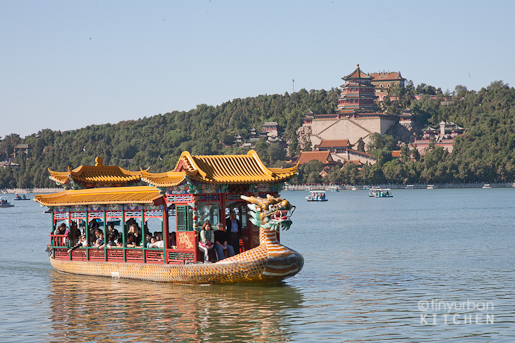
When he finally heard that the Qin troops had conquered Chu’s capital, he committed suicide by tying a heavy stone around his body and flinging himself into the river. The concerned townspeople, who loved him, desperately threw bah-tzangs into the river so as to prevent the fish from eating his body. To this day, the Chinese celebrate Duan Wu Festival (Dragon Boat Festival), in honor of Qu Yuan. Key traditions include eating lots of bah-tzangs and holding dragon boat races.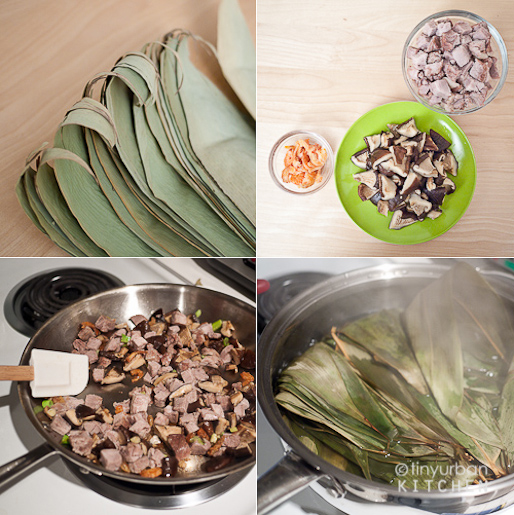
Bah-tzangs are complicated to make, and benefit greatly from a photo tutorial, which is why I finally decided to use this special opportunity to share my grandmother’s family recipe.
Each family and region has its own interpretation of bah-tzangs. The basics are the same: glutinous rice, bamboo leaves, and a filling that typically consists of pork, mushrooms, and dried shrimp. Beyond that, variations abound. For example, people from southern Taiwan sometimes like to add peanuts to the rice mixture. People from Nantou, Taiwan like to add black-eyed peas. My family? We like to add chestnuts.
So this weekend, I finally mustered up the courage and determination to attempt this recipe all by myself. I confess, I talked to my mom several times over the phone this weekend, but I did it! I made bah-tzangs! And I would love to share with you how to make them.
Voila – the “Liu” family (grandmother’s maiden name) bah-tzang recipe.
Taiwanese Sticky Rice Dumplings (Bah-tzang, Zhong Zi)
Rice Mixture
Sticky/glutinous rice 5 cups
Raw peanuts (with skin) 8 oz
Meat Mixture
pork butt/shoulder 2 lbs
Dried shitake mushroom 9 oz
Dried shrimp 1 oz
Dried pickled radish (optional) 4 oz
Scallions 3 stalks
Water ½ cup
Sugar 4 T
Soy sauce 2 T
Hot sauce to taste (optional)
Fried dry shallots 1 T
Salt about 1 t (to taste)
Covering
Bamboo leaves 8 oz
Prep Work (Preferably Night Before)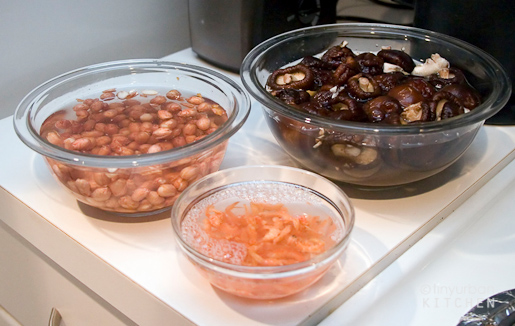
Mushrooms, Shrimp
Soak mushrooms and shrimp in hot water. After mushrooms are softened (around 10-15 minutes), cut off the mushroom stems. Slice the mushroom caps into quarters. Drain shrimp and set aside.
Peanuts
Soak peanuts in warm water for 1 hr. Bring peanuts to a boil in a pot of water and simmer for about 20 minutes. Then, soak peanuts in water overnight.
Rice
Soak rice in water overnight.
Pickled radish (optional)
Dice into 1 cm cubes
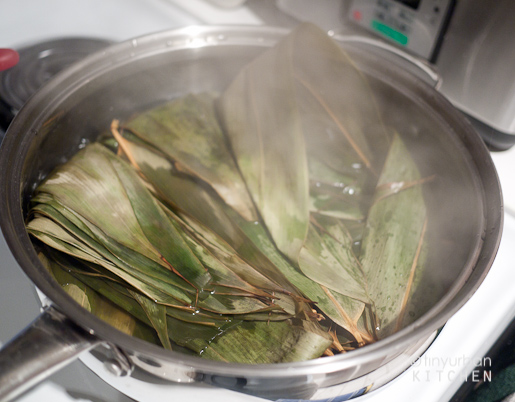
Bamboo Leaves
Bring bamboo leaves to a boil and then reduce to medium heat and cook until the leaves are completely soaked and the water has turned a little brown (about 25 minutes). Rinse the leaves and drain the water. You can optionally wash each leaf individually with a scrub if they still seem to be dirty.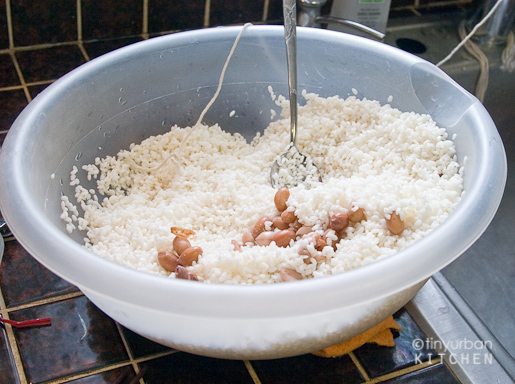
Next Day
Drain the rice and the peanuts, which have been soaking overnight. Mix the two together in a big bowl.
Stir Fry
Put the meat in a pot of cold water and bring the water to a boil. The pork will release bit of blood and other scum. Discard the dirty water. Fill the pot again with cold water and bring the meat to a boil again. Simmer for about 20-30 minutes, or until the meat is soft. Drain the water and salt the meat on each side. After the meat is cool enough to touch, cut off the fat and cut the meat into small 1 ½ cm cubes.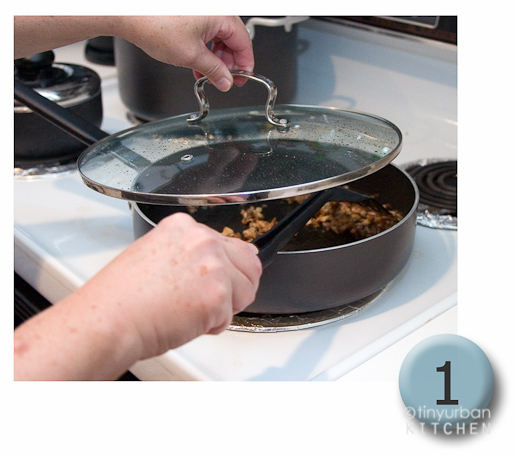
Saute the fatty bits of pork (medium high heat) to render the fat out. 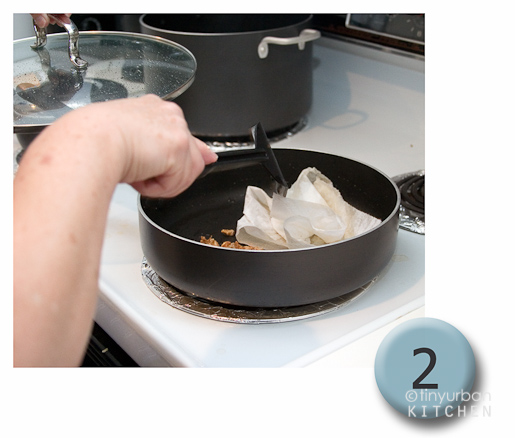
Absorb the rendered fat with a paper towel. Add about 2 T of vegetable oil. (Note - if you don't mind "fatty pork," you can omit this step and just use the pork fat for the stir fry. My family is very health-conscious).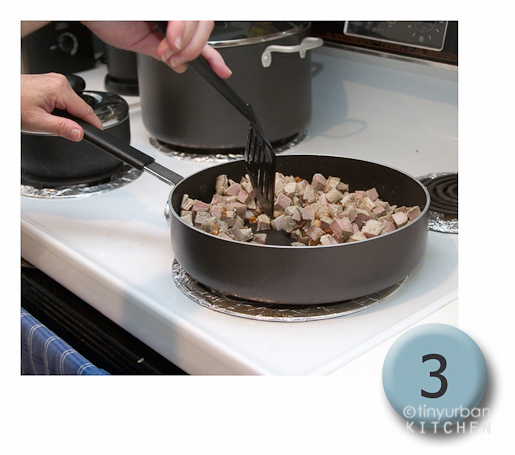
Add the lean pork and stir fry. After about 5 minutes, add scallions (white part), and dried shrimp. Stir fry for another 2 minutes. Then add the green part of the scallions and also the mushrooms. Optional: add hot pepper flakes and pickled radish cubes. Add water, sugar, and soy sauce. Let the liquid evaporate. Finally, add fried shallots and salt to taste (about 1 tsp).
Check saltiness by trying a mushroom. It should taste relatively salty (keep in mind it will be combined with lots of sticky rice!). If it's not that salty, add more soy sauce and reduce the liquid. Add some black pepper to taste.
Lay everything out in preparation for wrapping! Get some twine and tie together 10-12 strands, each strand being about 1.5 ft long.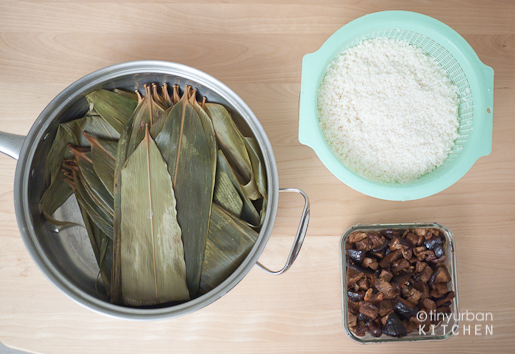
Hang the twine somewhere at a comfortable height for tying! (I used my kitchen cabinet handle)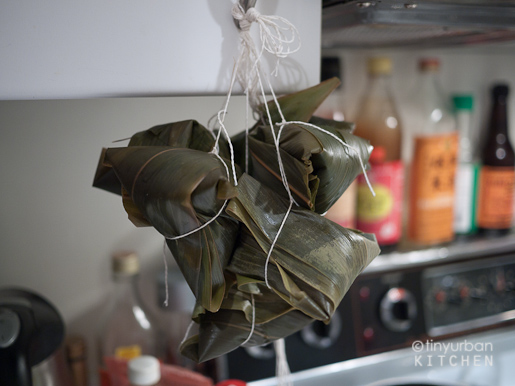
How to Wrap a Bah-Tzang
step by step photo instructional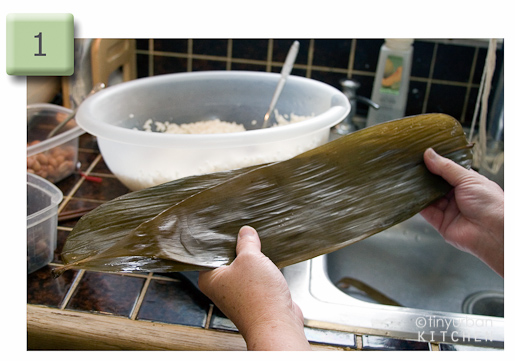
1. Grab about two leaves and place together on top of each other.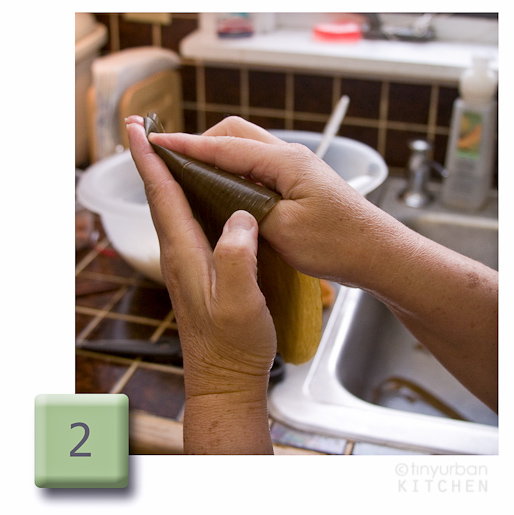
2. Fold in half and crease the tip about 1 cm over.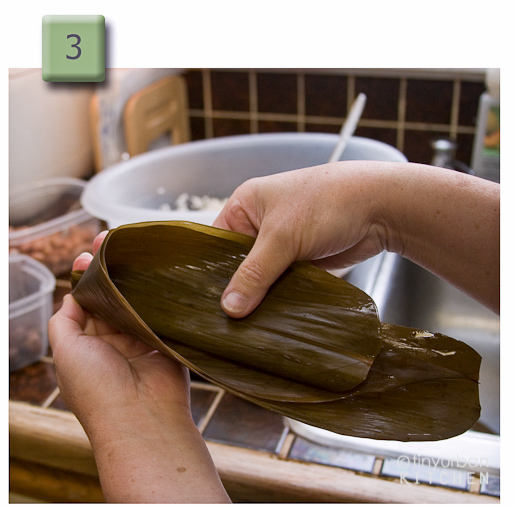
3. Turn the leaves around to form a funnel/cone.
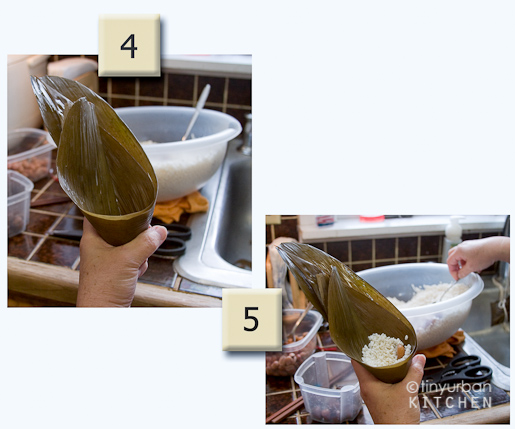
4. Hold leaves like an ice cream cone.
5. Scoop in enough rice/peanut mixture to fill the cone up about ¾ full, leaving a small well for the meat and vegetables.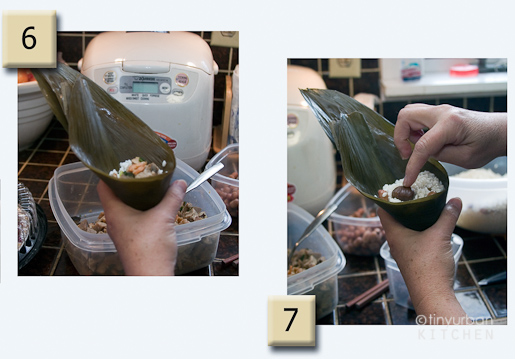
6. Add the meat and vegetable mixture (about a tablespoon).
7. Add a little more rice to cover. Add a chestnut (optional).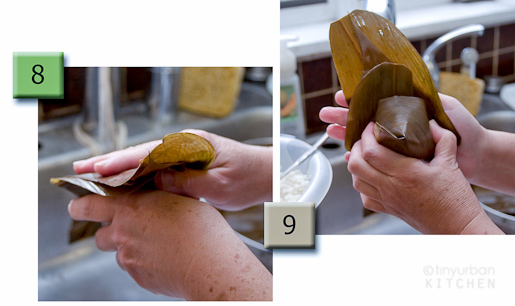
8. Fold the top edge over to close the gap.
9. Pull tightly, and wrap both sides of the cover around the rest of the bottom portion.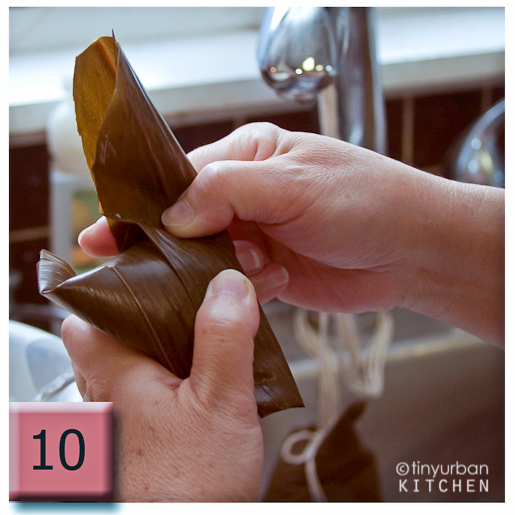
10. Pinch shut the last fold.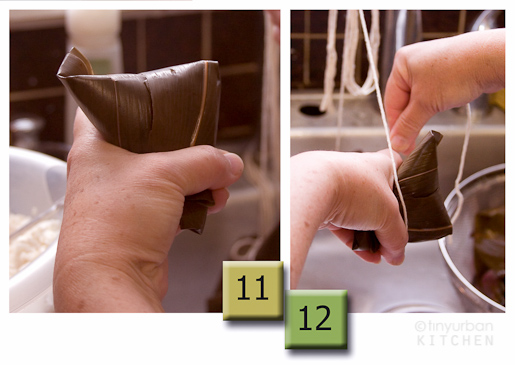
11. Fold over the flap.
12. Tie together the entire thing with twine.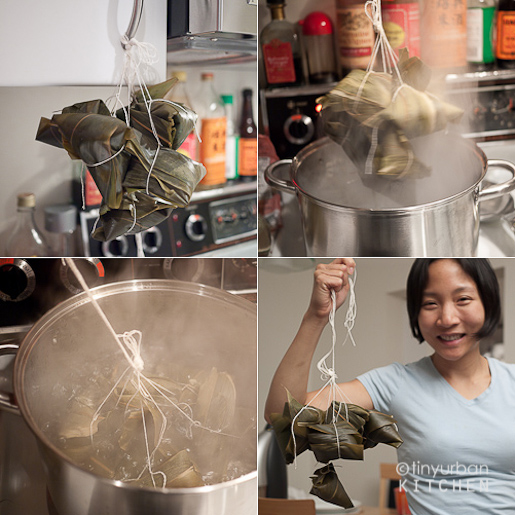
Boil bah-tzangs for about 45 minutes or until soft.
Serve! 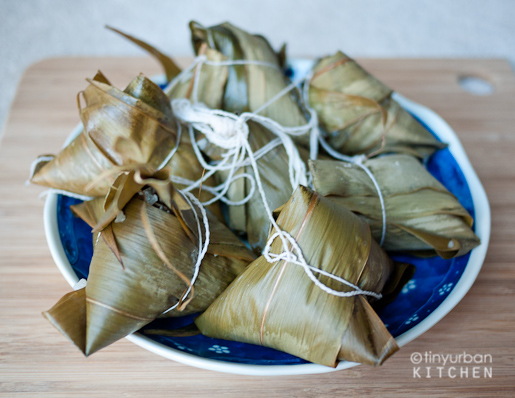
Yum yum yum . . .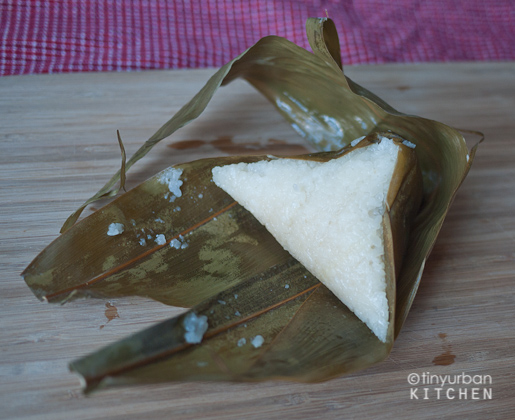
Unwrap. Don't eat the bamboo leaves!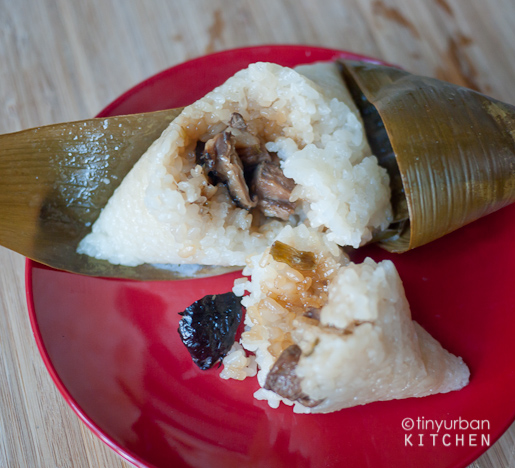
Best when enjoyed fresh. If reheating, try to steam if possible. If not possible, wrap in a wet paper towel and microwave for about 1 minute.
Epilogue
Thanks so much to my mom for all her help (over the phone) this weekend! As I said earlier, this is the first time in my life that I have singlehandedly made bah-tzangs from scratch all the way from the beginning.
Gramma passed away over a decade ago, so I'll never be able to share with her the joy I got from finally being able to make this family recipe. I'd like to dedicate this post to her. I'm so grateful to be able to experience just a tiny bit of what she had to share through recreating this recipe.
Thank you so much for those of you who voted for me last round. This blog entry is my submission for The Next Food Blog Star’s fourth challenge: Picture Perfect: create a step-by-step instructional tutorial. If you are so inclined, please vote for this blog. Thanks so much for your support!
All Rights Reserved

